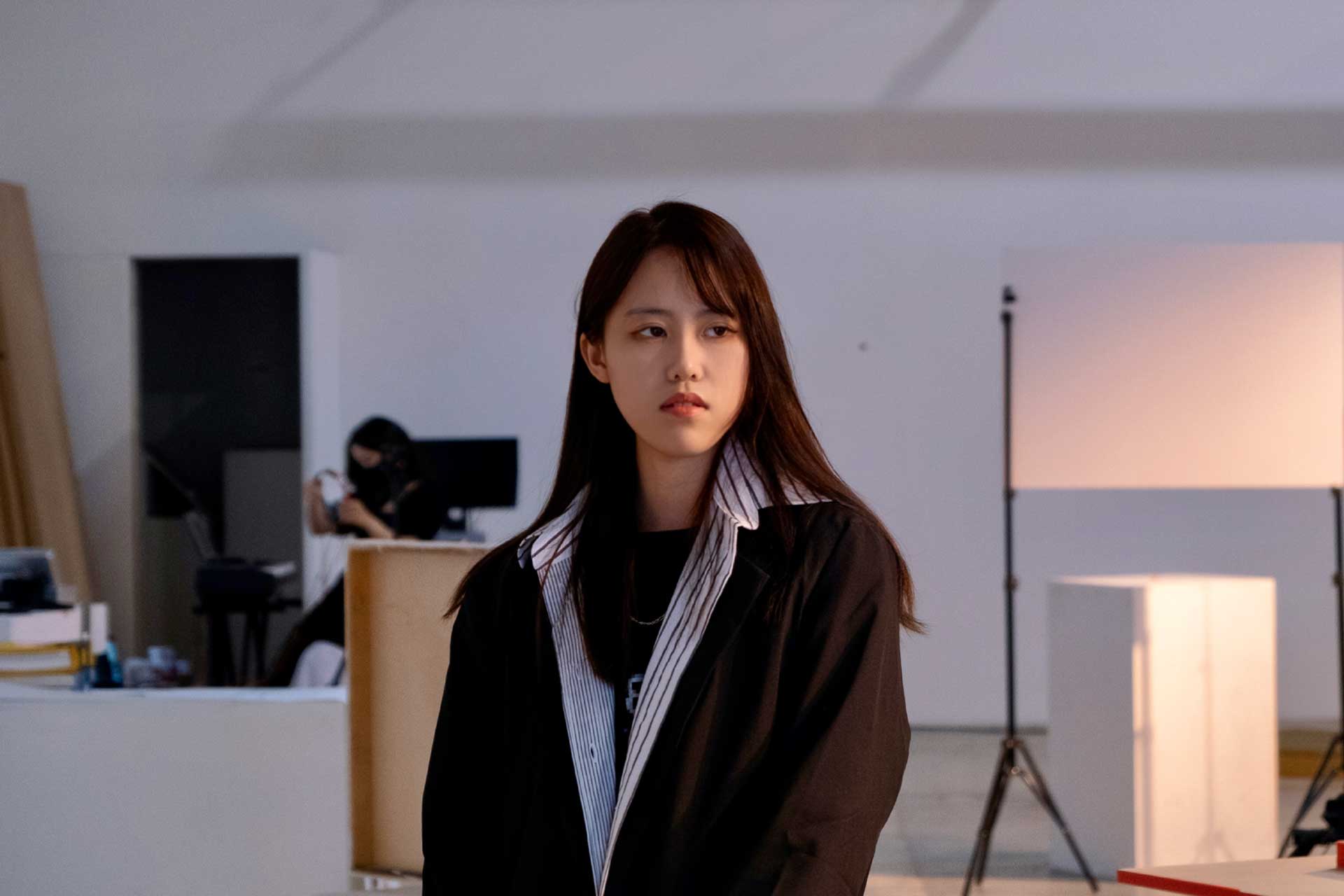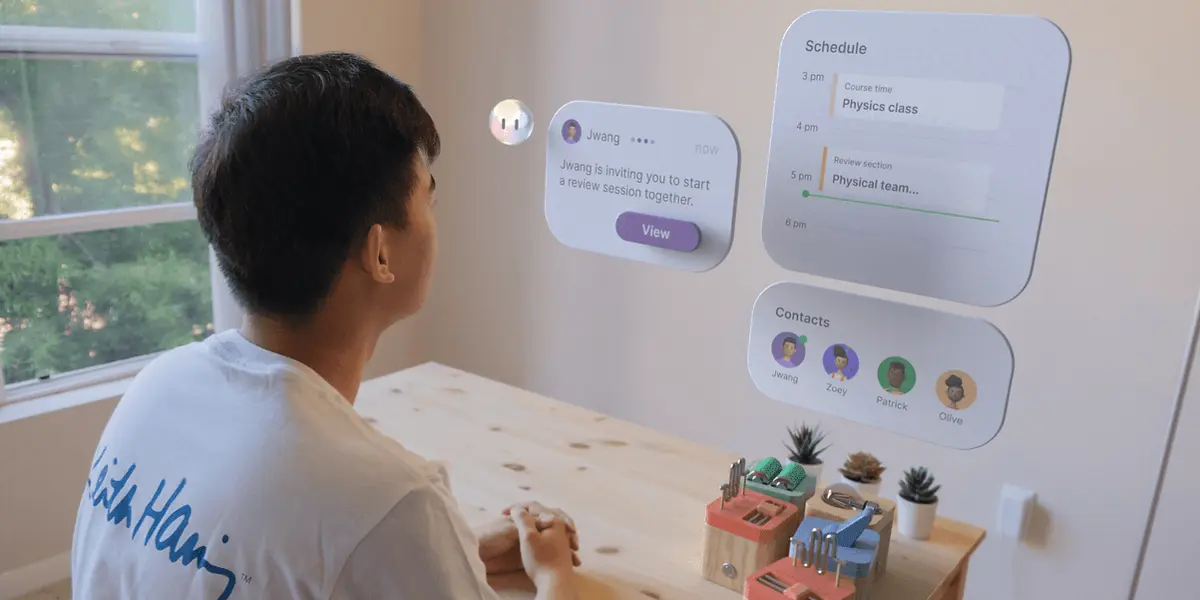1Please give us a brief bio of yourself and your design background.
Hi! I'm Ziyi Zhou, a professional UI/UX designer currently working in a tech company in the States. I hold a Master's degree in Design from the University of California, Berkeley, and a Bachelor's degree in Interaction Design from the Art Center College of Design.
Throughout my design career, I've collaborated with many renowned clients such as DEKA, BMW Group, and Capgemini. My innovative designs have gotten me many awards such as this one while having my works exhibited at prestigious venues including the MOOD Museum of Design in Italy and the Pasadena Convention Center in the United States.
2What made you become/why did you choose to become a designer/artist?
Choosing to become a designer was instinctive for me. My fascination with art and design, ingrained since childhood, combined with a natural talent, led me to this path. Simultaneously, the problem-solving dimension inherent in design has always captivated me. The exhilaration of discovering creative solutions to real-life challenges is truly unparalleled. As a designer, I find immense satisfaction in transforming ideas into tangible realities, actively contributing to addressing problems for individuals and society at large.
3Tell us more about your agency/company, job profile, and what you do.
Currently employed at a tech company in the United States, I am genuinely enthusiastic about the opportunities it presents. As a vital team member, my role revolves around harnessing design skills to craft intuitive and user-centered experiences. Witnessing the contentment reflected in the smiling faces of satisfied users brings me great joy, knowing that our work contributes to the creation of value for society.
4What does “design” mean to you?
To me, design embodies a captivating problem-solving journey that seamlessly combines creativity with logic and systems thinking. It draws inspiration from real-life needs, giving rise to solutions and innovations from ground zero to completion. Design permeates every facet of life, from the cups and tables we use to advertising posters, mobile applications, and even cutting-edge cars and rockets.
5What’s your favorite kind of design and why?
My preferred design style revolves around contemplating the entire product ecosystem. I find joy in employing logical and systematic approaches that prioritise the user's needs, seamlessly blending aesthetics with functionality.
6To you, what makes a “good” design?
A good design, to me, is a human-centered, problem-solving design. Design should create value for society and have sustainable development significance. If a design looks good but does not solve any problems or reflect thoughtful thinking, it falls short of true design.
7How did you come up with the idea for your award-winning design?
Knovo was inspired by the need for a more immersive and personalised education experience. By exploring VR technology and educational trends, I developed a VR education platform that uses immersive environments and intelligent algorithms to enhance learning. This design significantly improved student engagement and received industry recognition.
For ServGo, I focused on creating a more eco-friendly future vehicle. By integrating innovative technologies to enhance energy efficiency and reduce emissions, we tackled various technical challenges and achieved a solution that is both environmentally friendly and efficient, earning acclaim in the industry.
8What was your main source of inspiration for this design?
I got my inspiration from authoritative technology magazines and design magazines!
9Do you think your country and its cultural heritage has an impact on your design process?
Born in China and later receiving 5-6 years of higher education in the United States, my design and thinking are a fusion of Eastern and Western cultures. This unique blend allows me to draw inspiration from diverse perspectives, incorporating elements from both traditions into my design approach. It enriches my creativity and broadens my understanding, enabling me to create designs that resonate with a global audience while respecting and celebrating cultural diversity.
10Congratulations! As the winner of the London Design Awards, what does it mean to you and your company and team to receive this award distinction?
Winning the London Design Awards is a tremendous honour for me. This recognition signifies validation of our collective efforts, creativity, and dedication to pushing the boundaries of design excellence. It serves as a testament to the innovative spirit and commitment to quality that defines my work.
11Can you explain a bit about the winning work you entered into the London Design Awards, and why you chose to enter this project?
The winning work I entered into the London Design Awards is Knovo, an AR+VR educational system in the Metaverse. I chose to enter this project because it represents a significant innovation in the field of education, addressing longstanding challenges and offering a unique solution to enhance the learning experience. The incorporation of augmented reality, virtual reality, and AI to create personalised, gamified, and immersive learning experiences sets Knovo apart, and we believe it deserves recognition for its potential impact on the education industry.
Additionally, ServGo is a concept in eco-friendly transportation designed for the future. The project focuses on developing a vehicle that prioritises sustainability while enhancing user experience. Our goal was to address the urgent need for reduced environmental impact in the automotive industry by integrating cutting-edge technologies that boost energy efficiency and minimise emissions.
12What were the main challenges you faced during the design process, and how did you overcome them?
The most significant challenge I faced with this project was the need to pioneer and innovate without any prior reference or blueprint to guide us. Developing Knovo as an AR+VR educational system in the Metaverse meant venturing into uncharted territory within the education sector. I encountered the unique challenge of not only implementing cutting-edge technologies like augmented reality and virtual reality but also convincing stakeholders of their efficacy in revolutionising traditional learning methods.
13How do you think winning this award will impact your future as a designer?
From my perspective as a designer, winning the award has been a transformative experience for my career and professional practice. Being honoured with this award has elevated the visibility of my work within the design community and beyond. It serves as a powerful credential, showcasing my ability to think creatively, push boundaries, and deliver solutions that stand out in a competitive landscape. This recognition has instilled a new level of confidence in my design capabilities.
14What are your top three (3) favorite things about the design industry?
My top three favourite things about the design industry include its capacity for innovation and creativity, the ability to impact and improve various aspects of life through thoughtful design solutions, and the collaborative nature of the industry where diverse talents come together to create something meaningful.
15What sets your design apart from others in the same category?
As a designer, my style is defined by the seamless integration of cutting-edge technology with innovative aesthetics. I focus on creating solutions that not only address functional needs but also push the boundaries of design by incorporating new technologies. My approach combines a forward-thinking vision with a commitment to sustainability, resulting in designs that are both technologically advanced and visually compelling. This unique blend of form and function sets my work apart and drives the future of design.
16Where do you see the evolution of design industry going over the next 5-10 years?
Over the next 5-10 years, I anticipate the design industry evolving towards even more immersive and interactive experiences, driven by advancements in technology such as augmented reality, virtual reality, and artificial intelligence. Designers will likely play a crucial role in shaping the interfaces and interactions in the increasingly digital and interconnected world.
17What advice do you have for aspiring designers who want to create award-winning designs?
My advice would be to stay curious, embrace innovation, and be open to collaboration. The design field is dynamic, and continuous learning and adaptation to emerging trends are key to success.
18What resources would you recommend to someone who wants to improve their skills in the design industry?
Resources I recommend for improving skills in the design industry include online courses and platforms like Coursera and Udacity, design conferences and workshops for networking and staying updated on industry trends, and joining design communities to connect with fellow professionals and share experiences.
19Tell us something you have never told anyone else.
We faced internal skepticism about the feasibility of implementing AR and VR in education. Overcoming this skepticism and pushing the boundaries of traditional thinking led to the successful development of Knovo.
20Who has inspired you in your life and why?
My mother, being a tenacious entrepreneur, has been a tremendous source of inspiration and strength in my life. Her unwavering determination and resilience have left an indelible mark on my approach to challenges and pursuit of goals. Witnessing her navigate the complexities of entrepreneurship, facing setbacks, and overcoming obstacles with grace and perseverance, has instilled in me a deep appreciation for the power of resilience.
21What is your key to success? Any parting words of wisdom?
The key to success for us has been a combination of perseverance, a passion for creating meaningful solutions, and a commitment to continuous improvement. My parting word of wisdom is to stay true to your vision, be open to learning, and don't be afraid to push boundaries.
22Do you have anything else you would like to add to the interview?
I believe in the transformative power of design, and this recognition encourages us to continue pushing the boundaries of what is possible in the future.





